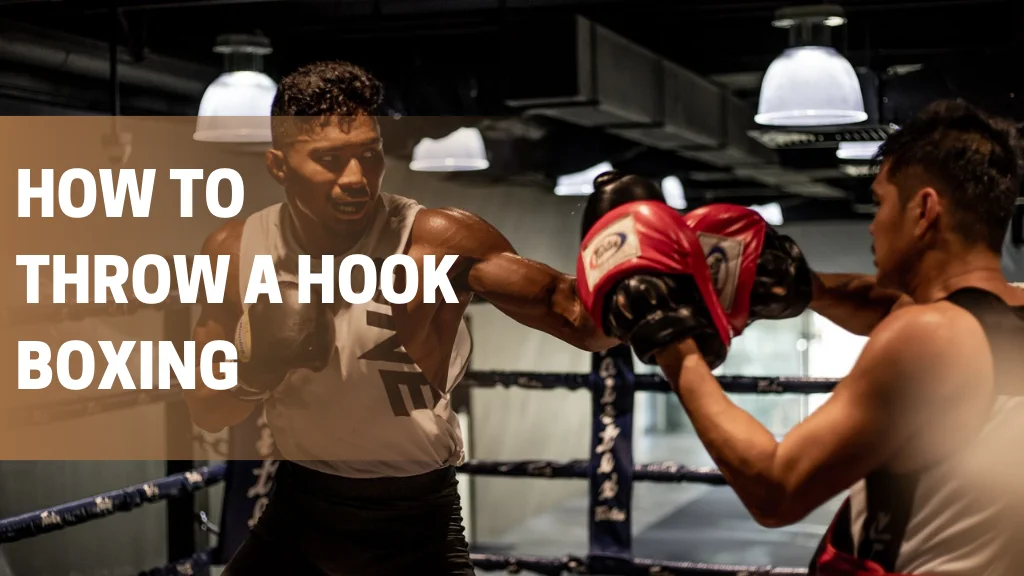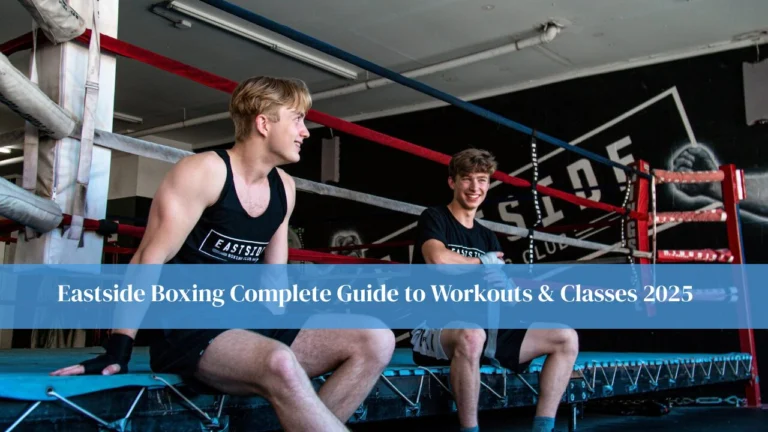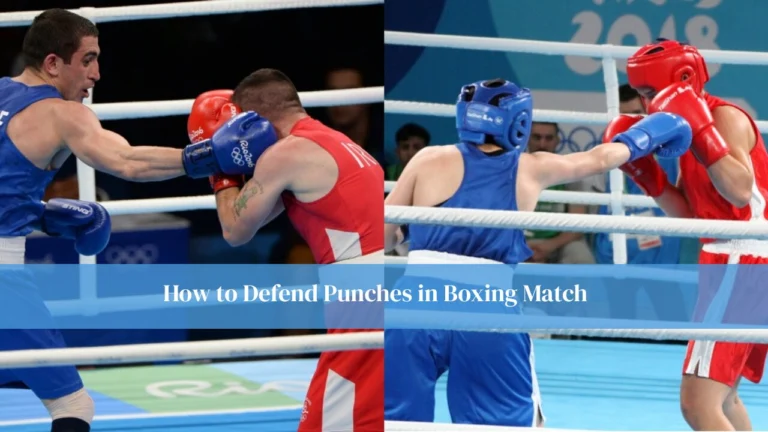Boxing, often dubbed as the “sweet science,” is a sport where mastering individual punches can transform a boxer’s skillset and overall fight strategy. Among these punches, the hook holds a special place for its ability to combine power, precision, and tactical advantage. Mastering the art of throwing a hook in boxing is crucial for any boxer looking to add both offensive power and defensive versatility to their arsenal. This punch can be a genuine game changer in any fight, offering a way to penetrate an opponent’s defense and deliver significant damage. Understanding the art of how to throw a hook in boxing, and practicing it with discipline, can elevate a boxer from competent to formidable. This guide explores the step-by-step fundamentals and professional insights on throwing the perfect hook while aligning with the highest boxing standards.
How to Throw a Hook Boxing
A hook is a powerful, circular punch thrown with the lead or rear hand, aimed at the side of an opponent’s head or body. It is one of the most recognizable punches in boxing history, famously used by legends such as Joe Frazier, Mike Tyson, and Canelo Álvarez to secure knockouts. The hook generates force through the combined action of foot pivot, hip rotation, and shoulder drive. Unlike straight punches, it comes in from the side, making it an excellent weapon for catching opponents who rely heavily on a tight frontal guard.
The Stance
Your stance is the platform from which every punch in boxing is launched. Without a strong foundation, even the most technically perfect hook will lack the necessary power and control. The stance for a hook is slightly more dynamic than for straight punches, as it must allow rotational movement without compromising balance.
Proper Foot Positioning
Start with your feet shoulder-width apart, positioning your lead foot a few inches ahead of your rear foot. Your toes should point slightly inward rather than straight ahead, which helps in maintaining stability during rotational movement. The placement isn’t just about comfort; it’s a calculated position to enable quick weight transfer and ensure that the torque generated from your lower body can travel up through your core and into your punch. Elite trainers emphasize that poor foot positioning often leads to off-balance hooks, leaving a boxer vulnerable to counters.
Body Alignment
Your knees should be slightly bent, your weight evenly distributed across both legs, and your back straight but relaxed. This athletic posture prepares you to spring into action whether to pivot into a hook, slip a punch, or retreat from danger. Maintaining proper alignment allows the energy from your legs and core to flow seamlessly into your hook, maximizing punching power while reducing unnecessary strain on the shoulder and elbow.
Hand Positioning
Your hands are your tools, and how you position them can determine the difference between an effective hook and a poorly executed one. Correct hand positioning ensures both protection and readiness to attack.
Fist Formation
Form your fist by curling your fingers tightly into your palm and wrapping your thumb securely over the index and middle fingers. This compact shape not only protects your hand on impact but also directs the force into the first two knuckles, which are structurally stronger and more capable of delivering maximum damage without injury.
Guard Position
Always keep your non-punching hand high to guard your face, particularly your chin and temple, the most vulnerable knockout points. Your punching hand should be ready, not dangling or flaring out. Maintaining this disciplined guard position ensures that even in the heat of offense, you are protected against incoming counters. This balance of offense and defense is the hallmark of disciplined boxing.
Executing the Hook
Throwing a hook is not simply swinging your arm sideways. It is a coordinated chain of movements starting from your feet, traveling through your hips and torso, and culminating in a sharp, compact punch. Without this kinetic chain, the hook loses much of its potential.
Rotation and Pivoting
The secret to a powerful hook lies in your body mechanics. The pivot of your lead foot allows your hips and torso to rotate explosively toward your target. This isn’t just arm movement it’s a whole-body motion that generates the torque needed for a fight-ending punch. Imagine twisting your body like a coiled spring and then releasing it with precision; that’s the essence of an effective hook.
Arm Movement
Your punching arm should travel in a controlled horizontal arc, with the elbow bent at roughly ninety degrees and kept in line with your fist. Avoid flaring the elbow too wide, as this makes the punch easier to see and counter. Instead, keep it tight, compact, and fast. This structure allows the force generated from your body rotation to travel directly into the target.
Connecting the Punch
On impact, ensure that your knuckles particularly the index and middle make solid contact. This is where your power is concentrated. Precision here is critical. A well-timed and accurately placed hook can bypass an opponent’s guard entirely, landing with maximum effectiveness and minimal energy loss.
Common Mistakes
Even experienced boxers can fall into technical traps when throwing a hook. Understanding these pitfalls can help you avoid them and maintain consistency in your performance.
Overextending
Overreaching with your hook compromises balance and opens you up to counterpunches. Every punch has an optimal range; if you go beyond it, your structure collapses. Staying within range allows for quicker recovery and follow-up combinations.
Dropping the Guard
Lowering your non-punching hand while delivering a hook is a classic mistake. This creates an opening for your opponent to land a clean counter, especially from the opposite side. Maintaining guard discipline protects you and gives you more tactical options.
Incorrect Footwork
Crossing your feet or remaining flat-footed robs your hook of power and mobility. The best hooks are delivered while maintaining fluid foot positioning, allowing you to transition immediately into defense or the next offensive move.
Training Tips
Perfecting the hook requires consistent, targeted training. While sparring is valuable, structured drills accelerate improvement.
Shadow Boxing
Shadowboxing lets you rehearse the motion without resistance, focusing on form, speed, and balance. Practicing in front of a mirror allows you to self-correct posture, pivot timing, and guard position.
Heavy Bag Work
The heavy bag builds both the impact strength and muscular endurance needed for repeated hooks. Work on driving through the bag, not just tapping it, while still keeping your form tight.
Partner Drills
Partner drills simulate real fight conditions. Drilling hooks with a training partner allows you to develop timing and learn how to set up the punch with feints or jabs, increasing its effectiveness.
Advanced Techniques
Once the fundamentals are second nature, you can begin integrating more advanced hook variations into your arsenal.
Double Hook
A rapid double hook often to the body and then the head disrupts an opponent’s defensive rhythm and can create openings for more decisive strikes.
Body Hook
Targeting the ribs or liver with a hook can sap an opponent’s stamina. Body hooks may not always produce a knockout, but they weaken your opponent’s ability to defend and counter effectively.
Safety Measures
Protecting yourself is as important as attacking your opponent. Proper protective equipment and preparation prevent injuries that could sideline your training.
Hand Wraps
Good hand wraps stabilize your wrists and protect small hand bones from the repeated stress of punching. Wrapping correctly also improves glove fit and overall comfort during training.
Proper Gloves
Using gloves suited to your activity whether bag work, sparring, or competition ensures optimal protection. Quality gloves also help maintain correct punching form.
Conclusion
The hook is a powerful weapon when executed correctly. By mastering stance, footwork, guard discipline, and timing, you can develop a hook that’s both technically sound and fight-effective. It’s a punch that demands respect and when perfected, it can be the difference between winning and losing in the ring.
FAQs
How long does it take to master a hook in boxing?
Mastery of the hook punch varies among individuals, depending on their dedication, training frequency, and athletic ability. Consistent practice over months can lead to significant improvement.
Can I practice throwing hooks without equipment?
Yes, shadowboxing is an effective way to practice hooks and other punches without any equipment.
What is the most common mistake when throwing a hook?
The most common mistake is overextending, which can leave a boxer off-balance and exposed to counterattacks.
Related Post:




